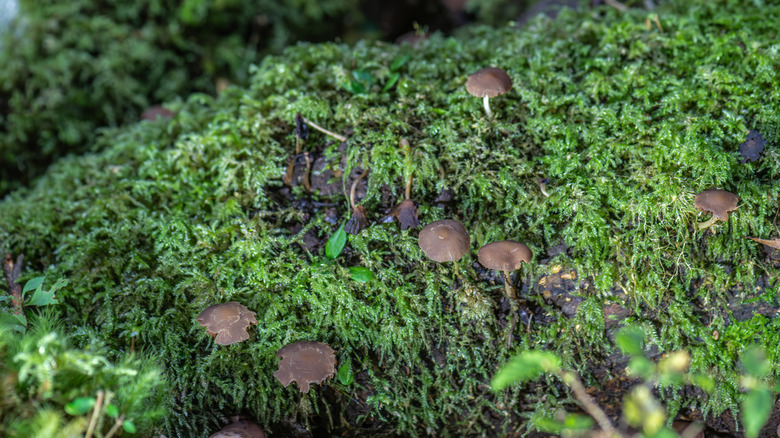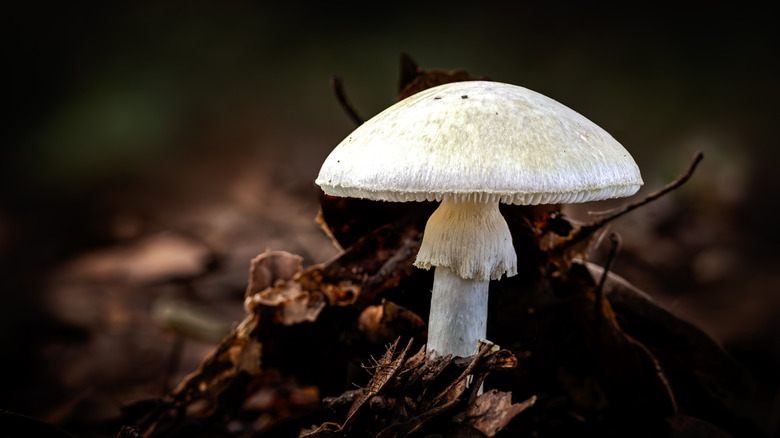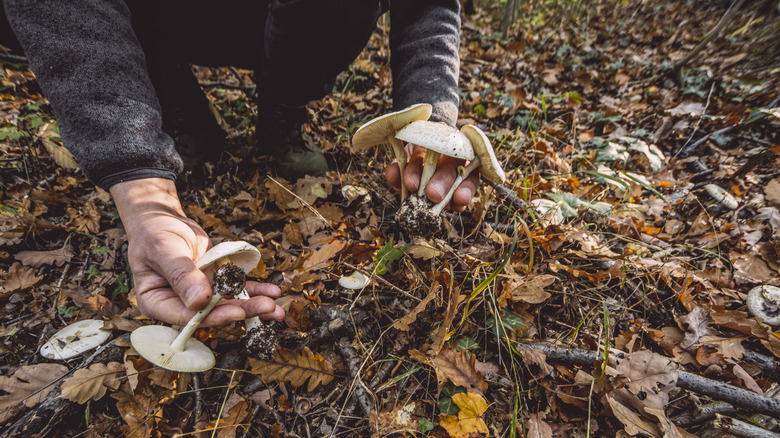If This Deadly Mushroom Is Growing In Your Lawn, Here's What To Do
While some mushrooms are completely harmless and, in fact, quite delicious to eat, others can cause severe or fatal health risks. The death cap mushroom, or Amanita phalloides, is aptly named due to its highly toxic properties and mortality rate, and it is to blame for 90% of mushroom-induced deaths around the world each year. Death caps are primarily found in the U.K., Ireland, and Europe; however, this deadly type of mushroom has quickly spread to North America over the past century. They have been spotted in California, Maryland, Maine, and other coastal states. If you find one growing in your yard, it's imperative to get rid of it as quickly as possible to reduce your risk of harm.
While it is technically safe to touch a death cap, it's not recommended. If you do make contact with one, wash your hands as quickly as possible afterwards to reduce the risk of the poison making its way to your mouth. Death caps are incredibly poisonous when ingested, and even tiny doses can be deadly. The toxins within the fungi, called amatoxins, start to shut down the liver and kidneys. If you have accidentally consumed a death cap mushroom, seek medical attention immediately.
How to spot a death cap mushroom
Death caps are typically spotted growing in and around the roots of trees, as the two organisms trade nutrients back and forth. While a death cap's appearance may be similar to some edible yard mushrooms, there are some key characteristics to look out for. In its younger stages, the poisonous mushroom has a domed cap, typically yellow or white with a green undertone. At maturity, death caps have a flat cap, growing to about 6 inches across and 6 inches tall. Some of their most significant characteristics are the floppy ring that appears directly below the cap, the white gills and spores, and the off-white stem.
Death caps most commonly appear during the springtime, as well as late summer and fall. As with most fungi, these toxic organisms tend to thrive in moist environments, specifically areas with high humidity. If your lawn has areas of pooled water or moist, shaded areas underneath trees, you should keep an eye out for the deadly fungi. They typically grow in groups, also known as clusters.
How to safely get rid of death cap mushrooms
If you spot this deadly mushroom in your yard, there are a few tactics for safely removing and disposing of the fungi. Do not mow the lawn as a way to get rid of them; this will not uproot them and will only increase the risk of further spreading. Before touching the mushrooms, make sure to wear protective gloves and have a disposable container at the ready. To remove them from the ground, grab them at the root and pull, making sure to uproot the entire mushroom from the base. You can then place them in the container, sealing it shut as best you can. When disposing of the mushrooms, never place them in the compost, as they can continue to spread. Make sure to place the container in the trash. Once you've finished disposing of the fungi, toss your gloves and wash your hands thoroughly.
To ensure the mushrooms do not spread or come back, you should avoid overwatering your lawn, as the added moisture can encourage more growth. If your yard has an excessive amount of decaying material, like leaves or wood, make sure to clear these areas, as death caps are likely to grow in such environments. Aerating your lawn will also help increase your soil's drainage and keep water from pooling up.


